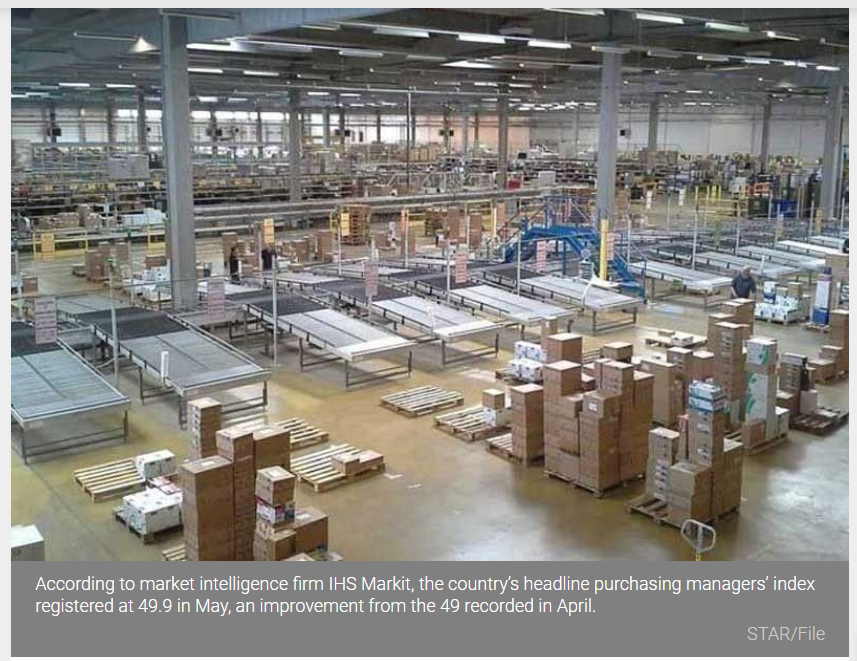Philippines: Factory output improves in May
MANILA, Philippines — The downgrade of quarantine restrictions helped the manufacturing sector to bounce back last month, closing in to the stabilization level as a number of factories managed to restart operations.
According to market intelligence firm IHS Markit, the country’s headline purchasing managers’ index (PMI) registered at 49.9 in May, an improvement from the 49 recorded in April.
The May headline index is already close to the neutral 50 mark that separates expansion from contraction.
The headline PMI provides a quick overview of the health of the manufacturing sector based on the weighted average of five indicators: new orders (30 percent weight), output (25 percent), job creation (20 percent), supplier delivery times (15 percent) and inventories (10 percent).
IHS Markit’s latest reading revealed a softer downturn across the manufacturing sector, as operating conditions inched toward stabilization. Output levels declined at a softer pace, while only a marginal contraction in new orders was recorded.
This follows the downgrade to general community quarantine (GCQ) in mid-May for Metro Manila and nearby provinces as active COVID-19 cases start to decline anew.
“It revealed a swift movement towards stabilization with some businesses already resuming their operations. Softer declines in output and new orders signaled a step in the right direction, while a renewed increase in overseas demand also supported the sector,” IHS Markit economist Shreeya Patel said.
“There are also signs manufacturers are dealing well with supply issues as safety stocks continue to be built, helping keep backlogs at bay for now,” she said.
Despite a reduction in new orders, IHS Markit said there were signs that the overall demand picture was improving, with the rate of decline easing to only a marginal rate.
New orders from overseas markets rose sharply, helped by easing restrictions on the global level.
On the other hand, IHS Markit noted that firms continue to scale back on their hiring efforts, leading to the 15th consecutive month of contraction in employment, with the latest decline the sharpest in five months.
To mitigate delays and expectations of better demand in the coming months, producers added to their input inventory holdings in May. Pre- and post-production inventory growth were stable.
Pressure also remained on the supply chain as restrictions increased lead times and limited raw material availability. Firms also faced additional surcharges and higher freight costs.
Materials shortages also caused the prices of inputs to rise, heightening cost pressures on manufacturers. This caused them to raise the prices of their products to pass on some of the cost burden to customers.
Further, firms remain optimistic with the vaccination program underpinning hopes of a return to normality by next May. But the degree of confidence is still below the long-run series average, suggesting some firms remain wary of the longer-term implications of the pandemic.
“Policy-makers are working towards securing enough vaccines to inoculate a large proportion of the population. The rollout must gain momentum to prevent another tightening of measures and to encourage an economic recovery, however,” Patel said.
Source: https://www.philstar.com/business/2021/06/02/2102421/factory-output-improves-may


 English
English




